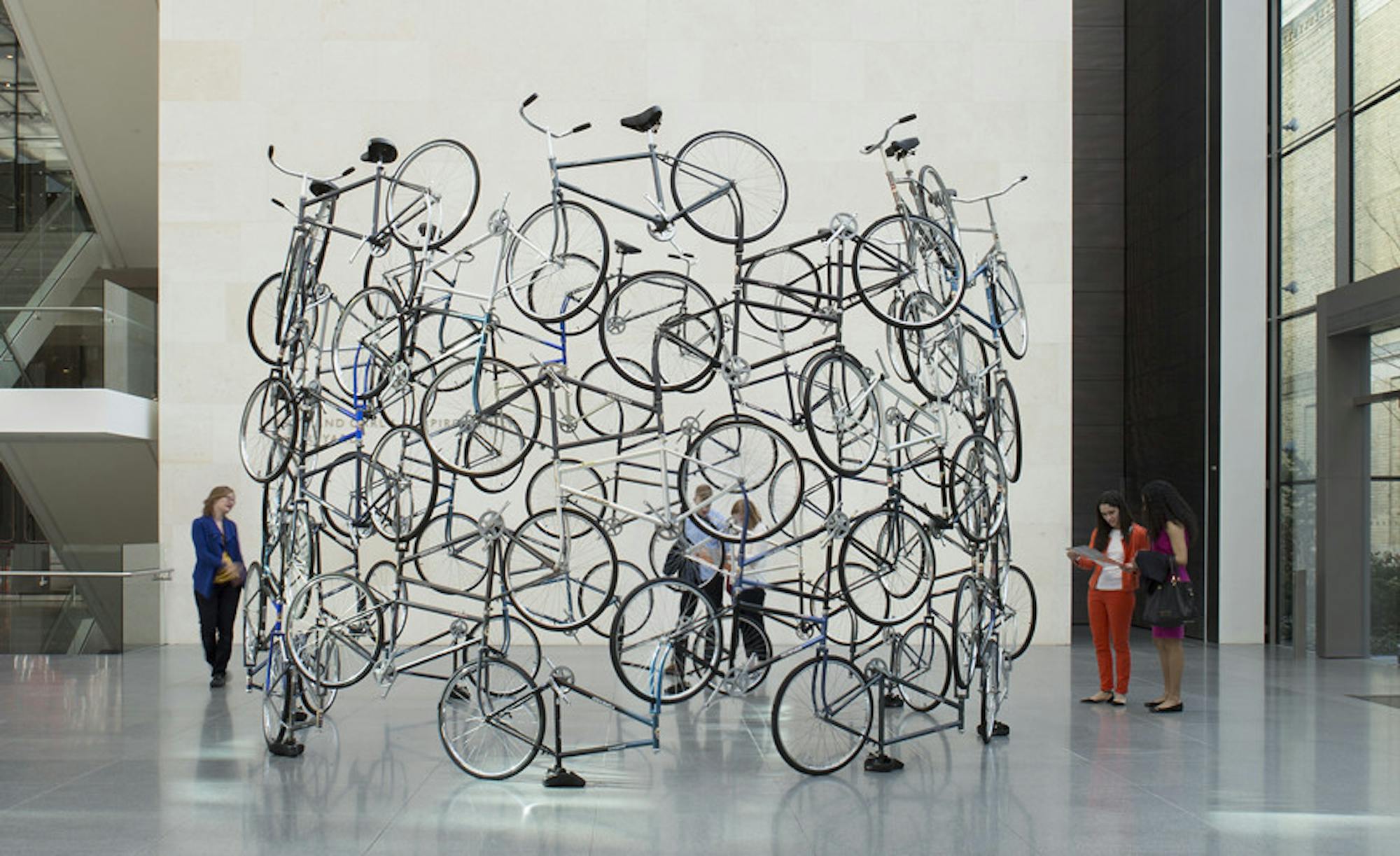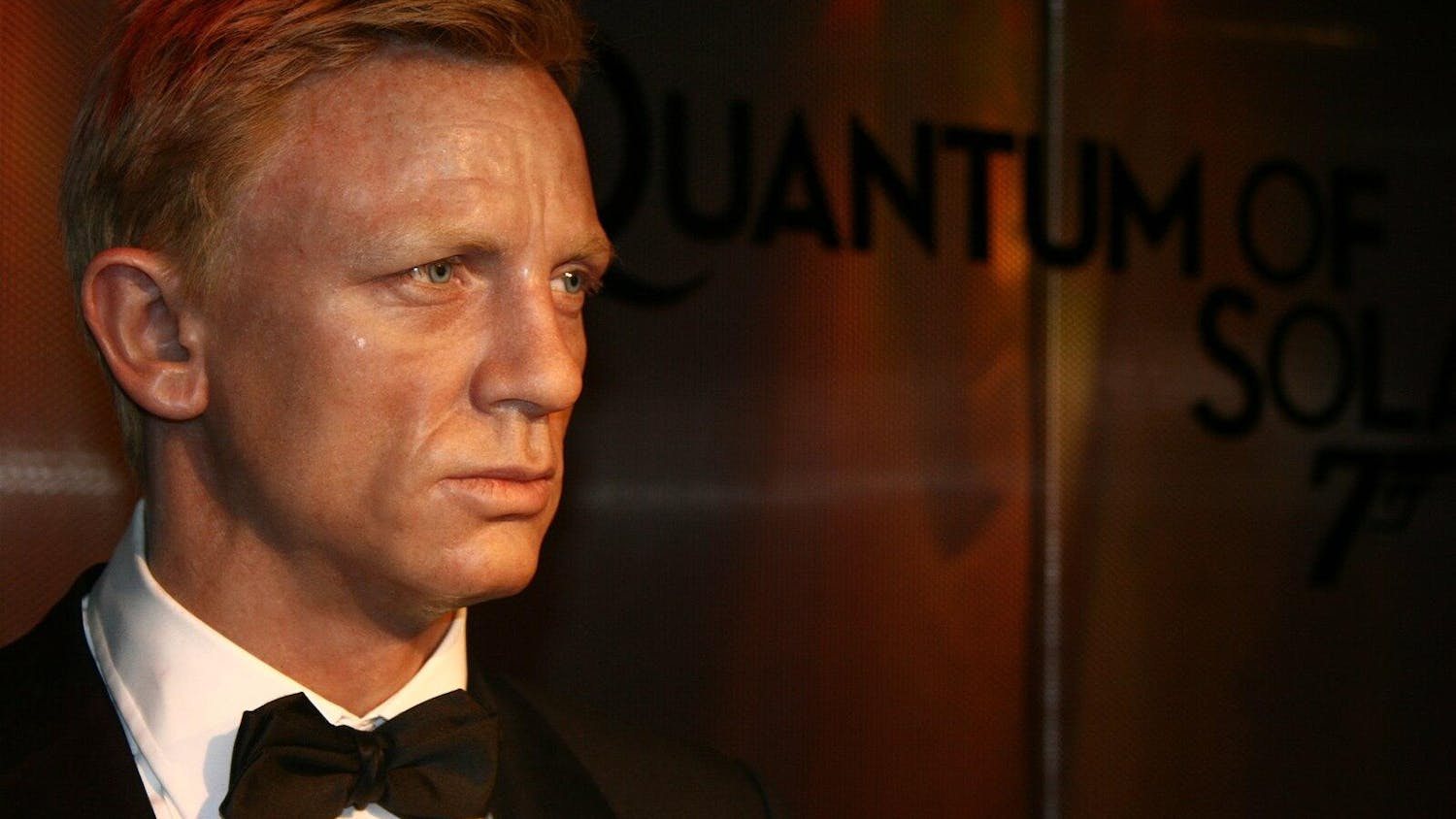Though the Museum of Fine Arts is one of the oldest art museums of United States — founded in the same year as Metropolitan Museum of Art — it is very much still interested in promoting and exhibiting contemporary art. The MFA’s still-evolving collection is already notable: it includes big names like Andy Warholand Kara Walker, as well as up-and-comers like Cheryl Ann Thomas, who just had an exhibition at Back Bay's Gallery NAGA last month. “Megacities Asia” is an extension of the MFA's dedication to contemporary art.
“Megacities Asia” centers on five of Asia’s most densely populated cities: Shanghai, Beijing, Mumbai, Delhi and Seoul.Each of these cities has a population higher than 10 million and are hence labeled “megacities." The works displayed touch upon topics such as over-population, urbanization and gentrification in megacities, and they respond to the social, political and environmental climate of modern day Asia.
Although small in terms of space and the number of works displayed, the exhibition still impresses. It notably features an all-star group of contemporary Asian artists, with Chinese artist Ai Weiwei front and center. Named one of the “Top 10 Living Artists of 2015” by Artsy Magazine, Weiwei is the superstar of contemporary art right now, in part due to his 2011 arrest in China, which led a public feud between the artist and the Chinese government. Weiwei's recent show at Royal Academy of Arts in London earned both critical praise and commercial success. Understandably, “Megacities Asia” has been marketed as “the show that features Ai Weiwei," and while other works in the exhibition are impressive, Weiwei’s installation “Forever” (2003) stands out the most. Inspired by Marcel Duchamp and readymade art, Weiwei attaches together a number of steel bikes to create a cylindrical shape. Monumental in size, the work is both deeply personal and socially relevant. As a child Weiwei dreamed of having a bike, a symbol of freedom and mobility. However, returning to Beijing after more than a decade of living abroad, Weiwei realized that the dream of owning a bike now diminished as fast cars and large highways had taken over the city. In a way, the work emphasizes the ways in which urbanization changes our dreams and values.
Other works in the exhibition are just as ambitious as "Forever." Han Seok Hyun’s “Super-Natural” (2011)comprises a huge pile of green products found in supermarkets in Seoul and Boston. The green color is supposed to stress how “healthy” these products are, yet when piled together, the soda cans and cleaning product looks like a colossal pile of waste. With rapid urbanization and the rise of consumption culture, Hyun asks his viewers what is and what isn’t healthy and eco-friendly in modern city life. Another highlight is Hema Upadhyay's “8’ x 12’" (2009). Using scrap materials, Upadhyay creates a map of Mumbai on the inside of a cube-like structure visitors can walk into. Upadhyay’s city looks congested, overwhelming and lively, echoing the character of the ultra-dense Indian city.
One of the biggest advantages of “Megacities Asia” is that each work displayed complements the others. The exhibition functions as if it is a puzzle, with each speaking to a different aspect of modern day Asian cities. With “Megacities Asia,” artists can simultaneously promote their art and their cities, while the exhibit allows the MFA to demonstrate its commitment to exhibiting impressive and significant works of contemporary art.
Small yet cutting-edge, ‘Megacities Asia’ vitalizes the contemporary art scene in Boston

The piece "Forever" (2003) by artist Ai Weiwei is made of 64 steel bicycles and displayed at the Museum of Fine Arts in their "Megacities Asia" exhibition.
Summary
Although small in size, "Megacities Asia" brings contemporary art's biggest names to Boston.
4 Stars





